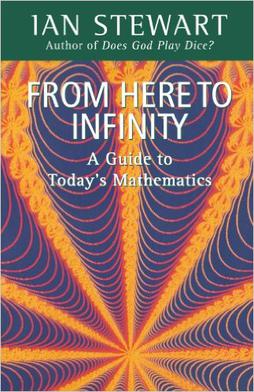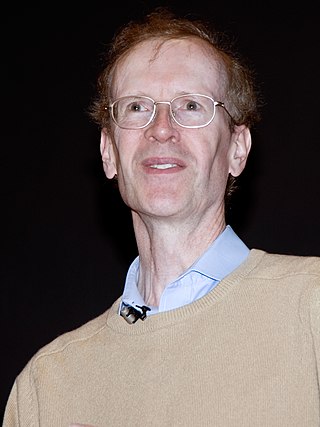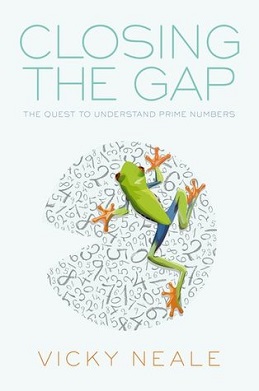Related Research Articles

Angle trisection is a classical problem of straightedge and compass construction of ancient Greek mathematics. It concerns construction of an angle equal to one third of a given arbitrary angle, using only two tools: an unmarked straightedge and a compass.
Underwood Dudley is an American mathematician and writer. His popular works include several books describing crank mathematics by pseudomathematicians who incorrectly believe they have squared the circle or done other impossible things.

Pseudomathematics, or mathematical crankery, is a mathematics-like activity that does not adhere to the framework of rigor of formal mathematical practice. Common areas of pseudomathematics are solutions of problems proved to be unsolvable or recognized as extremely hard by experts, as well as attempts to apply mathematics to non-quantifiable areas. A person engaging in pseudomathematics is called a pseudomathematician or a pseudomath. Pseudomathematics has equivalents in other scientific fields, and may overlap with other topics characterized as pseudoscience.
In mathematical logic, the theory of infinite sets was first developed by Georg Cantor. Although this work has become a thoroughly standard fixture of classical set theory, it has been criticized in several areas by mathematicians and philosophers.

The Indiana pi bill was bill #246 of the 1897 sitting of the Indiana General Assembly, one of the most notorious attempts to establish mathematical truth by legislative fiat. Despite its name, the main result claimed by the bill is a method to square the circle, although it does imply various incorrect values of the mathematical constant π, the ratio of the circumference of a circle to its diameter. The bill, written by a physician who was an amateur mathematician, never became law due to the intervention of C. A. Waldo, a professor at Purdue University, who happened to be present in the legislature on the day it went up for a vote.

Pierre de Fermat was a French mathematician who is given credit for early developments that led to infinitesimal calculus, including his technique of adequality. In particular, he is recognized for his discovery of an original method of finding the greatest and the smallest ordinates of curved lines, which is analogous to that of differential calculus, then unknown, and his research into number theory. He made notable contributions to analytic geometry, probability, and optics. He is best known for his Fermat's principle for light propagation and his Fermat's Last Theorem in number theory, which he described in a note at the margin of a copy of Diophantus' Arithmetica. He was also a lawyer at the Parlement of Toulouse, France.

From Here to Infinity: A Guide to Today's Mathematics, a 1996 book by mathematician and science popularizer Ian Stewart, is a guide to modern mathematics for the general reader. It aims to answer questions such as "What is mathematics?", "What is it for " and "What are mathematicians doing nowadays?". Author Simon Singh describes it as "An interesting and accessible account of current mathematical topics".

In number theory, Fermat's Last Theorem states that no three positive integers a, b, and c satisfy the equation an + bn = cn for any integer value of n greater than 2. The cases n = 1 and n = 2 have been known since antiquity to have infinitely many solutions.

Wiles's proof of Fermat's Last Theorem is a proof by British mathematician Andrew Wiles of a special case of the modularity theorem for elliptic curves. Together with Ribet's theorem, it provides a proof for Fermat's Last Theorem. Both Fermat's Last Theorem and the modularity theorem were believed to be impossible to prove using current knowledge by almost all contemporary mathematicians.

Reverse Mathematics: Proofs from the Inside Out is a book by John Stillwell on reverse mathematics, the process of examining proofs in mathematics to determine which axioms are required by the proof. It was published in 2018 by the Princeton University Press.

Closing the Gap: The Quest to Understand Prime Numbers is a book on prime numbers and prime gaps by Vicky Neale, published in 2017 by the Oxford University Press (ISBN 9780198788287). The Basic Library List Committee of the Mathematical Association of America has suggested that it be included in undergraduate mathematics libraries.

Geometric Exercises in Paper Folding is a book on the mathematics of paper folding. It was written by Indian mathematician T. Sundara Row, first published in India in 1893, and later republished in many other editions. Its topics include paper constructions for regular polygons, symmetry, and algebraic curves. According to historian of mathematics Michael Friedman, it became "one of the main engines of the popularization of folding as a mathematical activity".
The Ancient Tradition of Geometric Problems is a book on ancient Greek mathematics, focusing on three problems now known to be impossible if one uses only the straightedge and compass constructions favored by the Greek mathematicians: squaring the circle, doubling the cube, and trisecting the angle. It was written by Wilbur Knorr (1945–1997), a historian of mathematics, and published in 1986 by Birkhäuser. Dover Publications reprinted it in 1993.

How Round Is Your Circle? Where Engineering and Mathematics Meet is a book on the mathematics of physical objects, for a popular audience. It was written by chemical engineer John Bryant and mathematics educator Chris Sangwin, and published by the Princeton University Press in 2008.
Geometric Constructions is a mathematics textbook on constructible numbers, and more generally on using abstract algebra to model the sets of points that can be created through certain types of geometric construction, and using Galois theory to prove limits on the constructions that can be performed. It was written by George E. Martin, and published by Springer-Verlag in 1998 as volume 81 of their Undergraduate Texts in Mathematics book series.
Mathematics in India: 500 BCE–1800 CE is a monograph about the history of Indian mathematics. It was written by American historian of mathematics Kim Plofker, and published in 2009 by the Princeton University Press. The Basic Library List Committee of the Mathematical Association of America has classified the book as essential for undergraduate mathematics libraries, their highest rating.

Fermat's Last Tango is a 2000 off-Broadway musical about the proof of Fermat's Last Theorem, written by husband and wife Joshua Rosenblum and Joanne Sydney Lessner. The musical presents a fictionalized version of the real life story of Andrew Wiles, and has been praised for the accuracy of the mathematical content. The original production at the York Theatre received mixed reviews, but the musical was well received by mathematical audiences. A video of the original production has been distributed by the Clay Mathematics Institute and shown at several mathematical conferences and similar occasions. The musical has also been translated into Portuguese.

The History of Mathematics: A Very Short Introduction is a book on the history of mathematics. Rather than giving a systematic overview of the historical development of mathematics, it provides an introduction to how the discipline of the history of mathematics is studied and researched, through a sequence of case studies in historical topics. It was written by British historian of mathematics Jackie Stedall (1950–2014), and published in 2012 as part of the Oxford University Press Very Short Introductions series of books. It has been listed as essential for mathematics libraries, and won the Neumann Prize for books on the history of mathematics.
Geometric Origami is a book on the mathematics of paper folding, focusing on the ability to simulate and extend classical straightedge and compass constructions using origami. It was written by Austrian mathematician Robert Geretschläger and published by Arbelos Publishing in 2008. The Basic Library List Committee of the Mathematical Association of America has suggested its inclusion in undergraduate mathematics libraries.
From Zero to Infinity: What Makes Numbers Interesting is a book in popular mathematics and number theory by Constance Reid. It was originally published in 1955 by the Thomas Y. Crowell Company. The fourth edition was published in 1992 by the Mathematical Association of America in their MAA Spectrum series. A K Peters published a fifth "Fiftieth anniversary edition" in 2006.
References
- 1 2 3 4 5 6 Singmaster, David (1993), "Review of Mathematical Cranks", Mathematical Reviews , MR 1189134
- 1 2 Fujii, John N. (May 1993), "Review of Mathematical Cranks", The Mathematics Teacher , 86 (5): 429–430, JSTOR 27968419
- 1 2 Stewart, Ian (January 1994), "Review of Mathematical Cranks", American Mathematical Monthly , 101 (1): 87–91, doi:10.2307/2325140, JSTOR 2325140
- ↑ Webster, Roger (November 1994), "Review of Mathematical Cranks", The Mathematical Gazette , 78 (483): 355–356, doi:10.2307/3620224, JSTOR 3620224
- ↑ Johnson, George (February 9, 1999), "Genius or Gibberish? The Strange World of the Math Crank", The New York Times
- 1 2 Richeson, David S. (October 8, 2019), "Beware of Cranks: Misguided attempts to solve impossible mathematical problems", Lapham's Quarterly
- ↑ Gajda, Amy (2010), The Trials of Academe: the new era of campus litigation, Harvard University Press, pp. 163–164, ISBN 9780674053861
- ↑ Matthews, Robert (November 2, 1996), "Review : Going nuts over numbers", New Scientist